1. Read it “Flowers for Algernon“, a short story written in 1958 by Daniel Keyes.
2. Drive your car closer and closer. The rhinos will then vacate the ford with a couple of feints towards the car, which, of course produces a few squeaks from the passenger sitting on the side of the car closest to the rhinos.
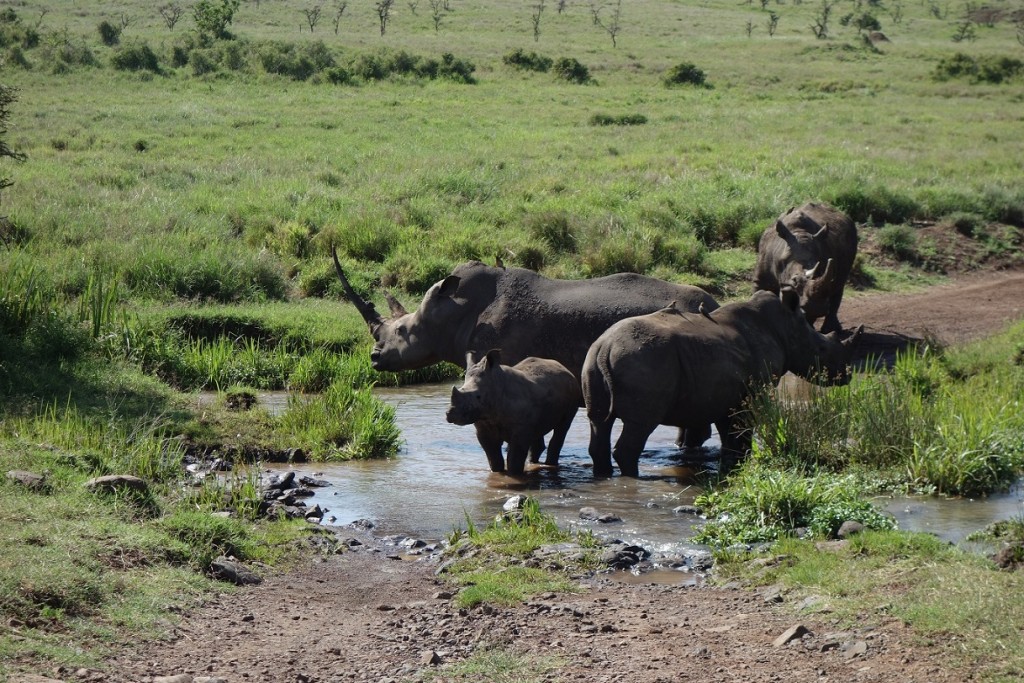
3. Gather about 50 people, including vets, sharpshooters, game wardens, security officers, drivers, pilots, scientists and spectators, a helicopter, multiple trucks and cars and a couple of heavy duty Volvo FL12 off-road trucks with built-in hydraulic lift arms. Then dart the rhino to knock it out, implant a transponder into its horn, manhandle the rhino around that so when it wakes up it dashes into a crate designed for holding rhinos, lift all 3,000 lbs of rhino aboard the truck and drive it to the Sera Rhino Sanctuary. All the while, have the services of two vets to make sure the rhino isn’t harmed in the process.
Let’s look at #3 in more detail.
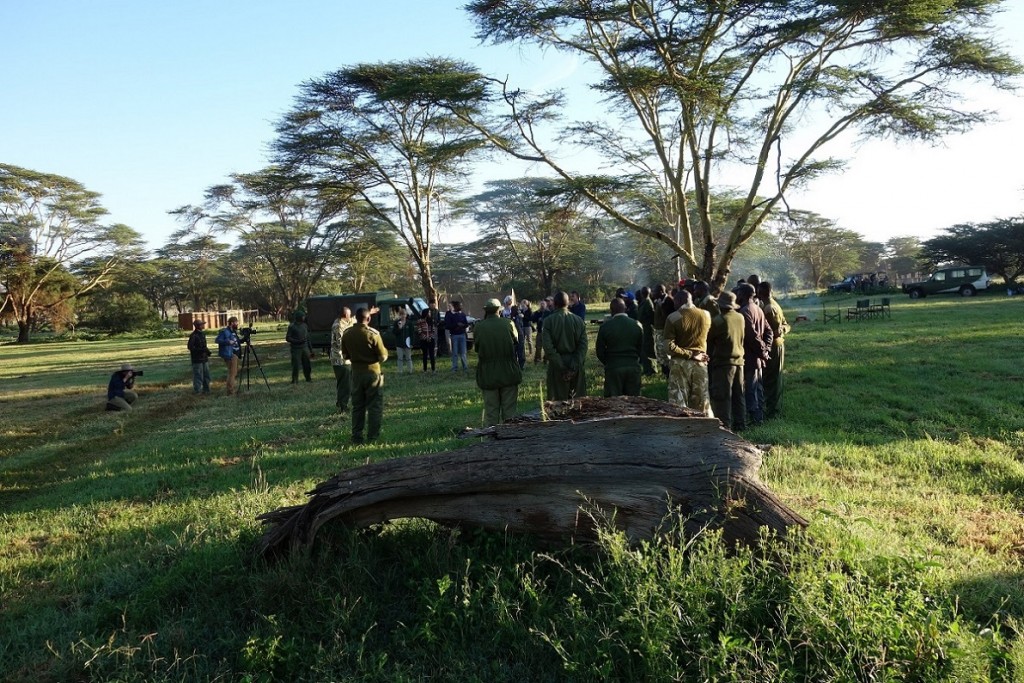
We arrived at the staging area for the black rhino capture around 6:30 AM. It felt like preparations for a military campaign. A member of Kenya Wildlife Service (KWS) briefed everyone on what was to be done. Who would ride in which vehicles, individual responsibilities, and the order of the convoy were all covered.
——————————————————————————————————————-
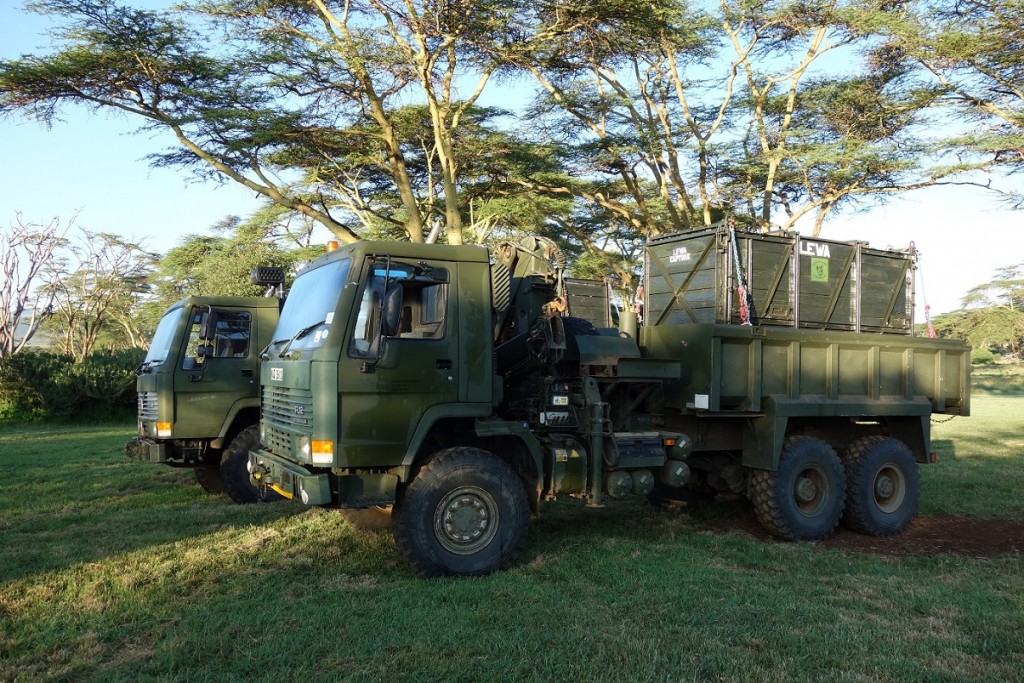
The plan was to translocate two black rhinos that day so two Volvo FL12 off-road trucks with hydraulic lifts were required.
——————————————————————————————————————-
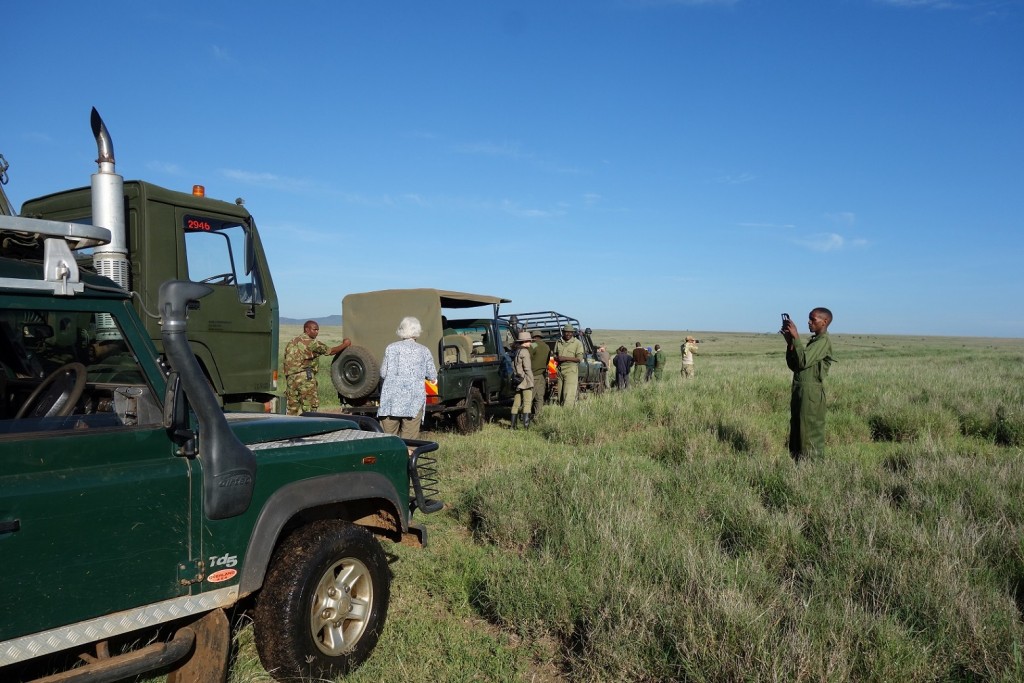
After the Lewa rangers located Mary, the first black rhino selected for translocation, we left the staging area. We stopped in the Sirikoi Plain to wait for the helicopter and to make sure that we were in the correct order within the convoy.
——————————————————————————————————————-
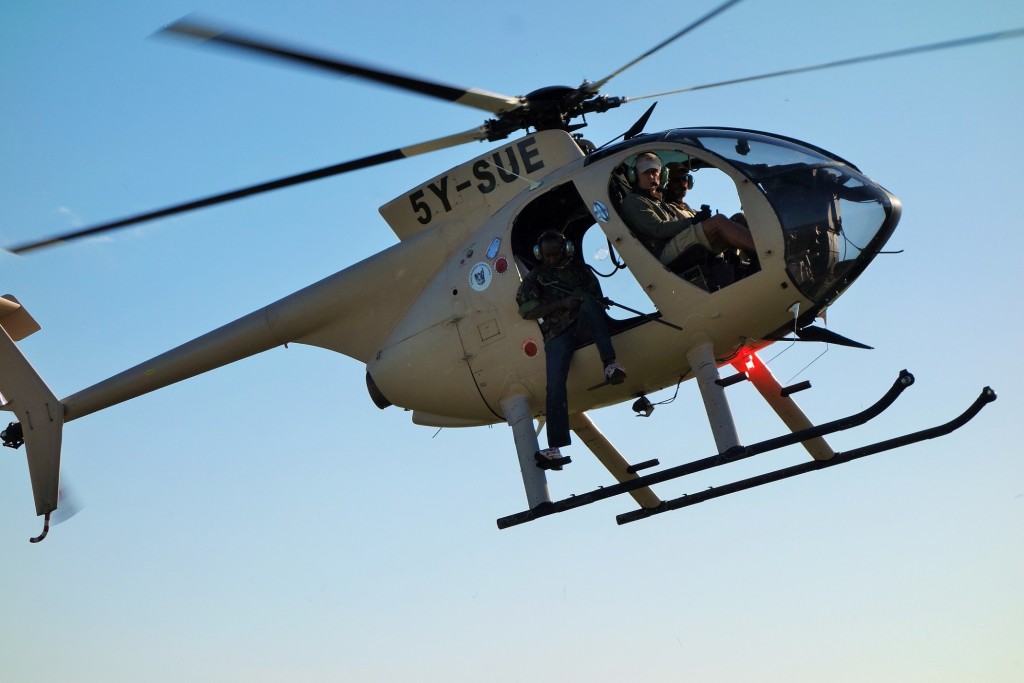
The helicopter arrived piloted by Mike Watson, the CEO of Lewa. A vet and the sharpshooter with an anesthetic dart gun climbed aboard. The sharpshooter strapped himself in, sat on the edge of the door and hung mostly outside the helicopter. He has been doing this for five years and reputedly has never missed a shot.
Mike used the helicopter to drive Mary down a hillside and onto the plain where she was easily accessible to the vehicles. Then the sharpshooter darted her. Mary continued running for about five minutes and then flopped to the ground, unconscious. Mike landed the helicopter and the vet raced for his patient.
——————————————————————————————————————-
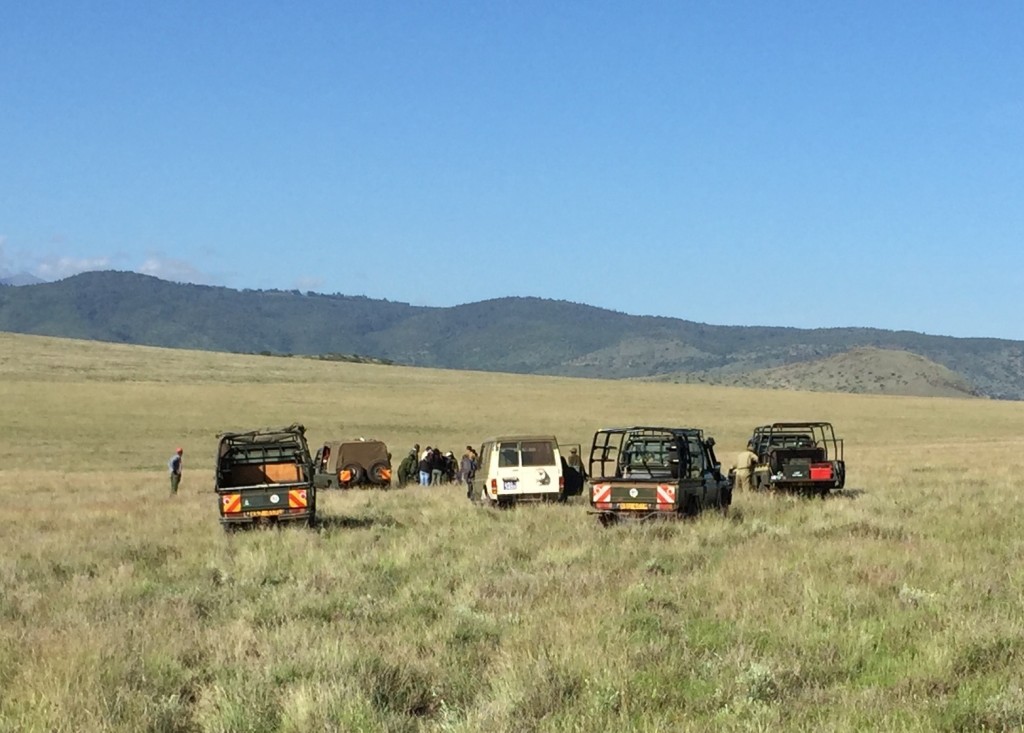
The first vehicles to arrive on the scene included the second vet, the transponder team, and KWS staff. The first priority was to see that the rhino was ok. The second was to complete all activities quickly so the rhino was unconscious as short a time as possible.
——————————————————————————————————————-
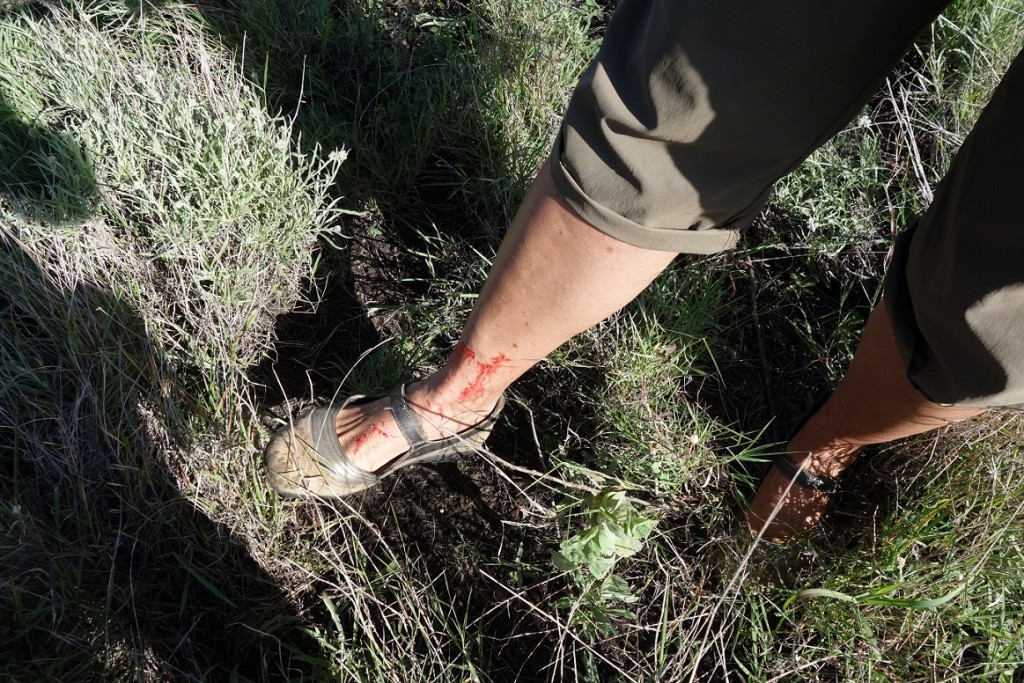
The rest of us followed soon afterwards. Running to the scene had its risks. Anne didn’t notice a “wait-a-bit” bush; a nasty shrub that got its name because its hook shaped thorns grab you and say “wait-a-bit.”
——————————————————————————————————————-
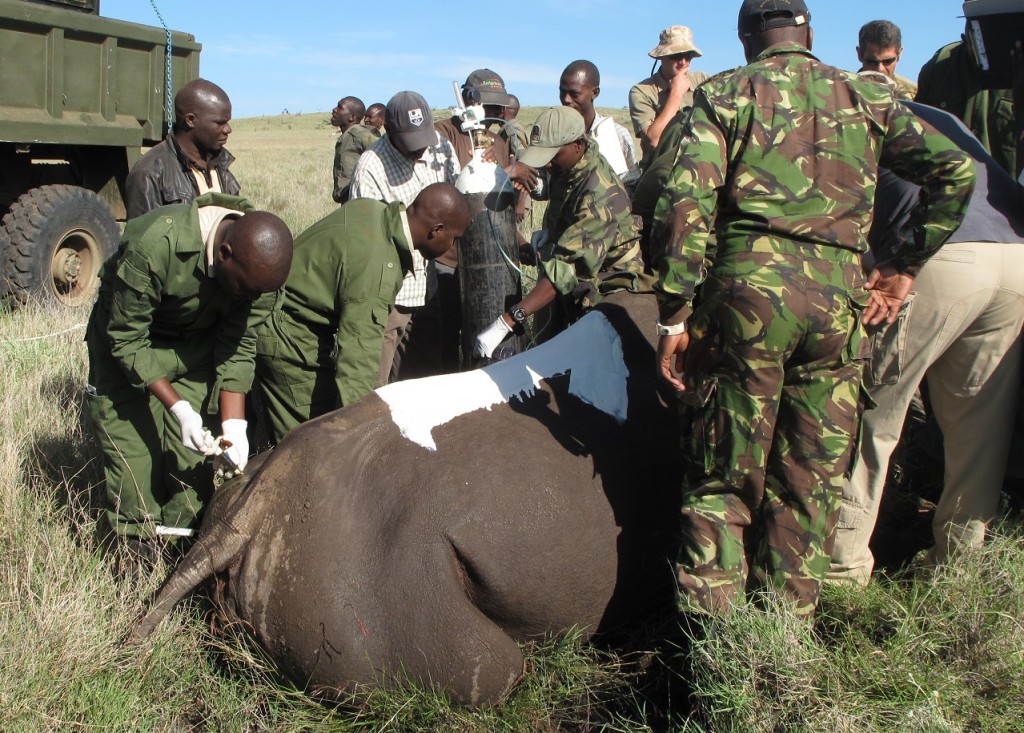
The dart still in her bottom (or bum as the Brits and Kenyans say) Mary had samples taken, blood drawn, oxygen administered, and a big white “1” painted on her back. The “1” was to make it easy to identify her from the air during the first couple of months of her stay in her new home in the Sera Rhino Sanctuary.
——————————————————————————————————————-
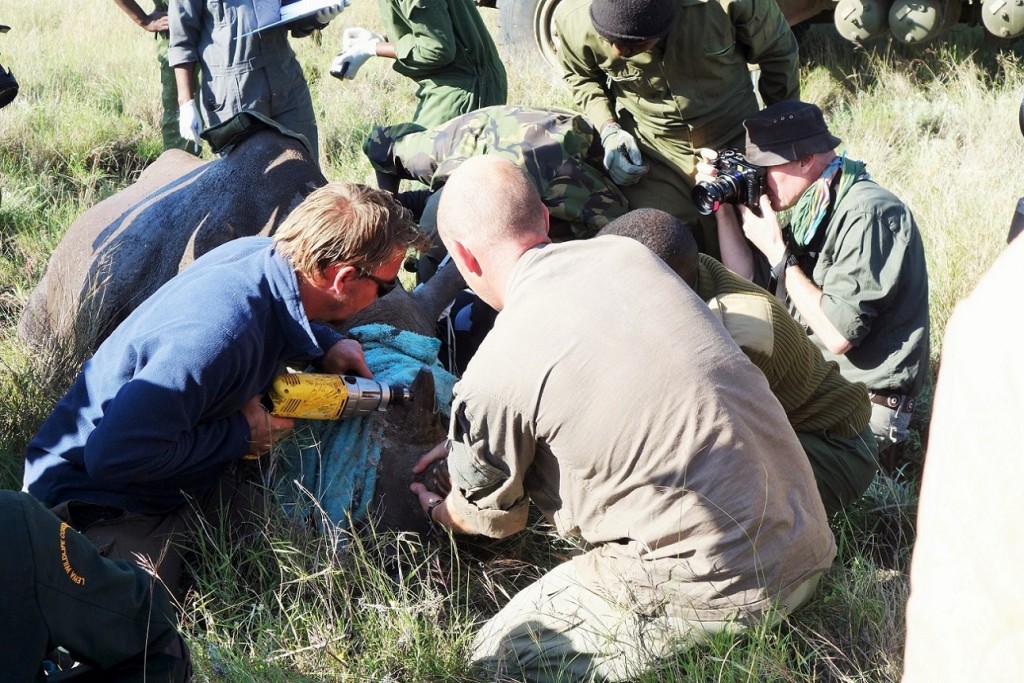
Batian Craig drilled a hole in Mary’s horn to emplace a transponder that will help track her for two years until the battery dies. Pete Newland held Mary’s head steady and kept the oxygen tube in place while Batian drilled.
——————————————————————————————————————-
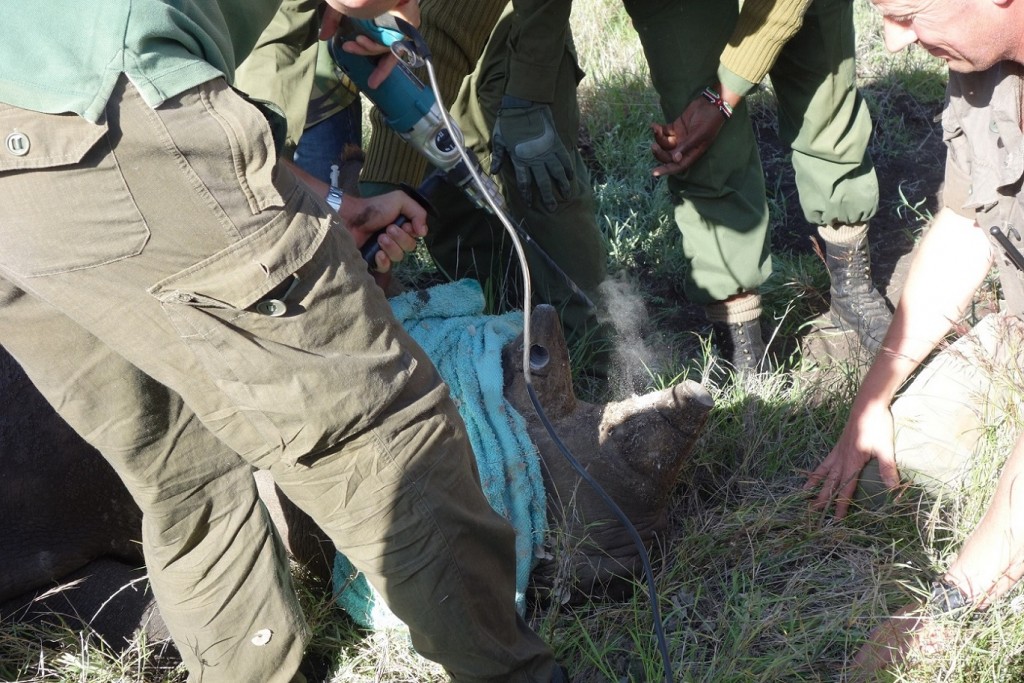
Once the main hole was ready another smaller hole needed to be drilled straight down through the bobbed horn tip to house the transponder antenna.
——————————————————————————————————————-
——————————————————————————————————————-
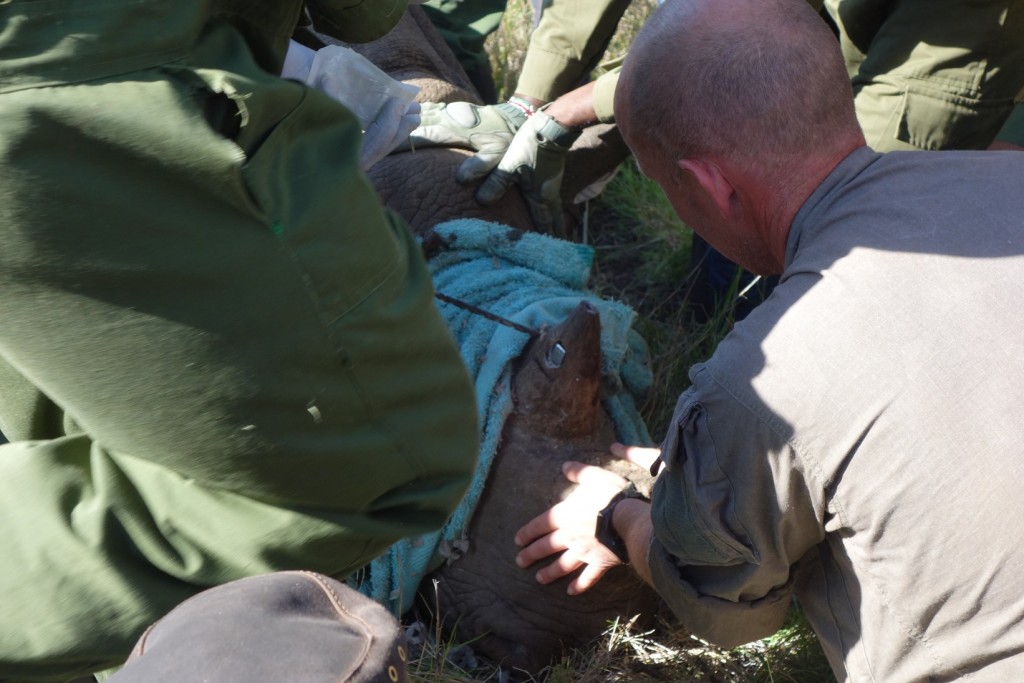
The transponder in place and ready to be epoxied in. After the epoxy cures the horn should be as strong as ever.
——————————————————————————————————————-
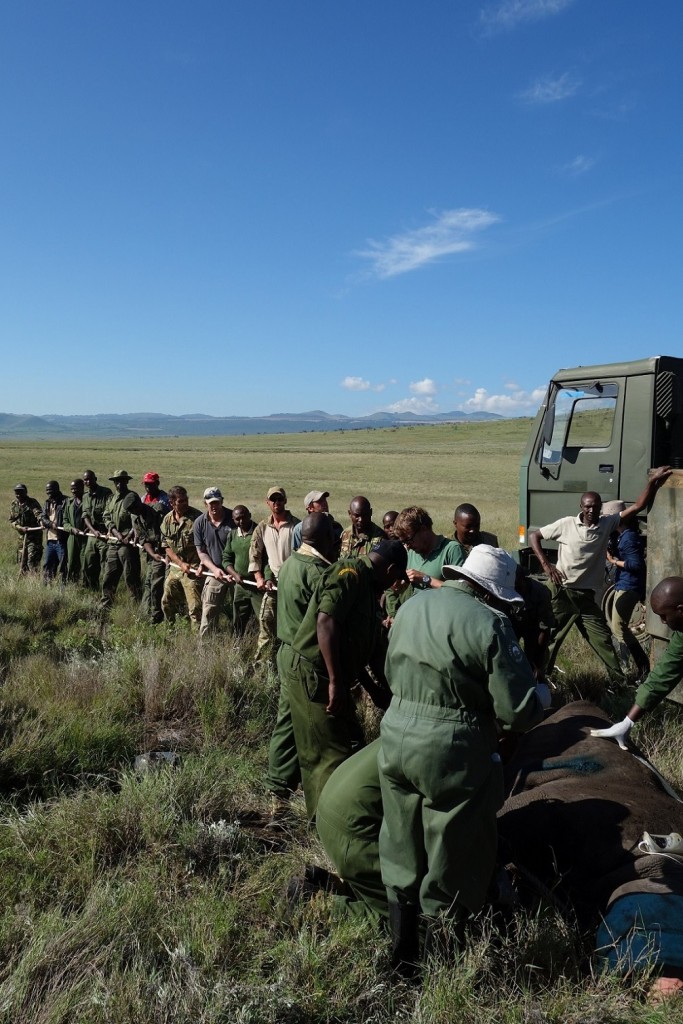
Batian Craig carefully positioned the entrance to the rhino crate under Mary’s chin so that when she was revived she would charge directly into the crate. Unfortunately Mary’s body lay at the wrong angle. It took a tug-o-war line of about 20 men to align her 3,000 lbs properly with the crate. We all felt a bit sorry for her as she was muscled around with a big rope.
——————————————————————————————————————-
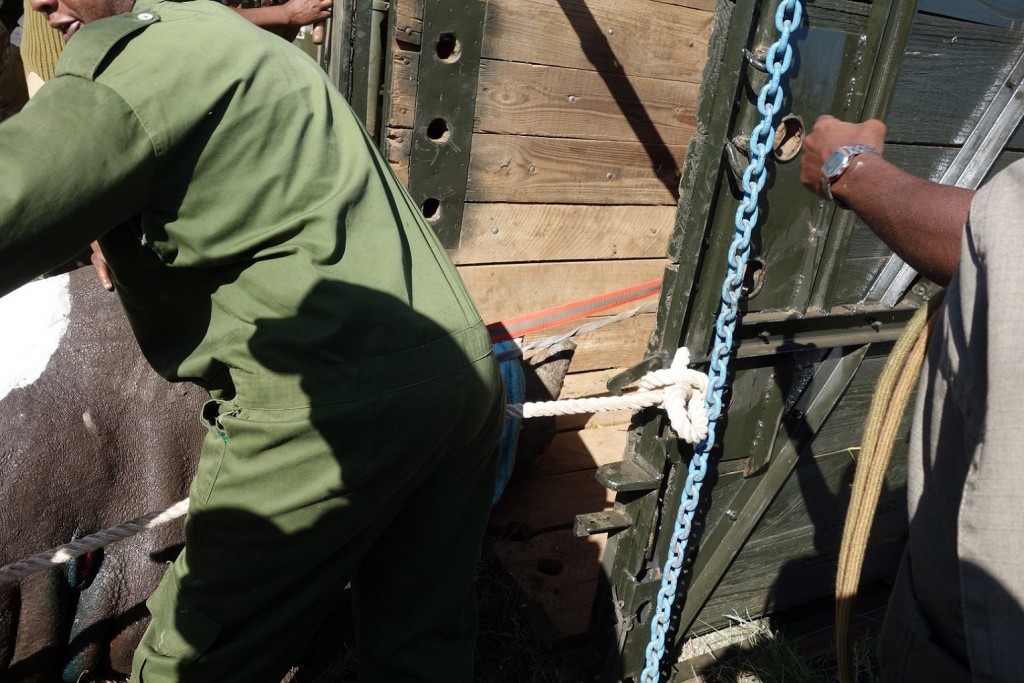
Once Mary was in position and a strap tied to her head to encourage her to walk straight into the crate, she was given an antidote to the anesthetic. This was the most dangerous moment. A rhino is big, strong, independent and once awake cannot be stopped if it decides to go in another direction. Mary was still groggy and went along with the program.
——————————————————————————————————————-
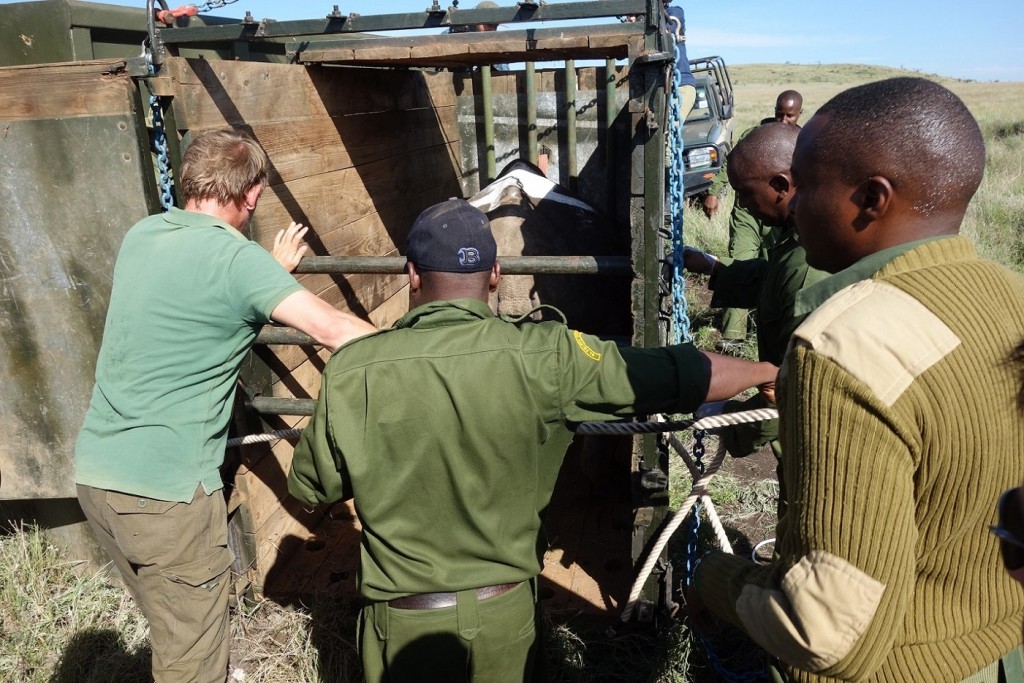
After the Rhino was in the crate, 3” steel bars were slid into place to keep her from backing out.
——————————————————————————————————————-
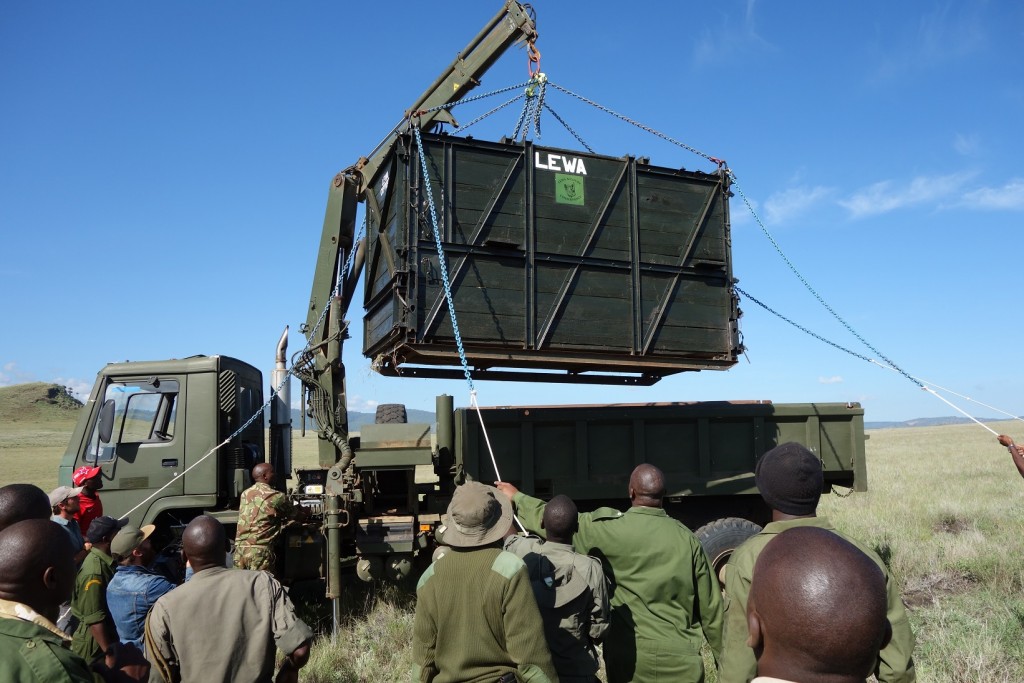
Mary was lifted onto the truck bed.
——————————————————————————————————————-
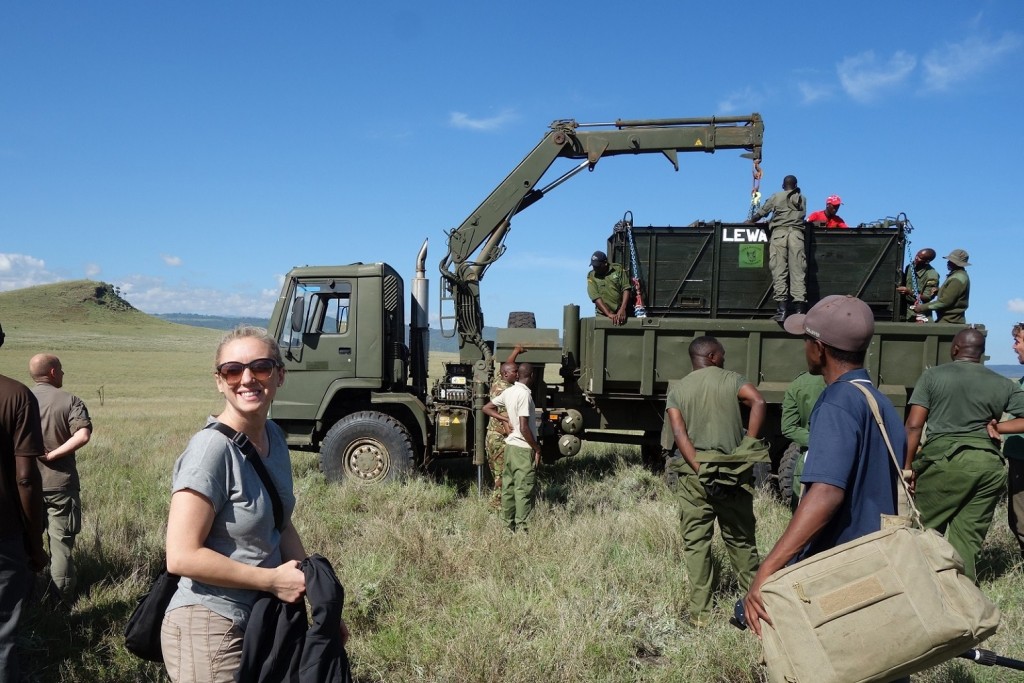
Sara Bonino watched as the crate was securely tied down.
——————————————————————————————————————-
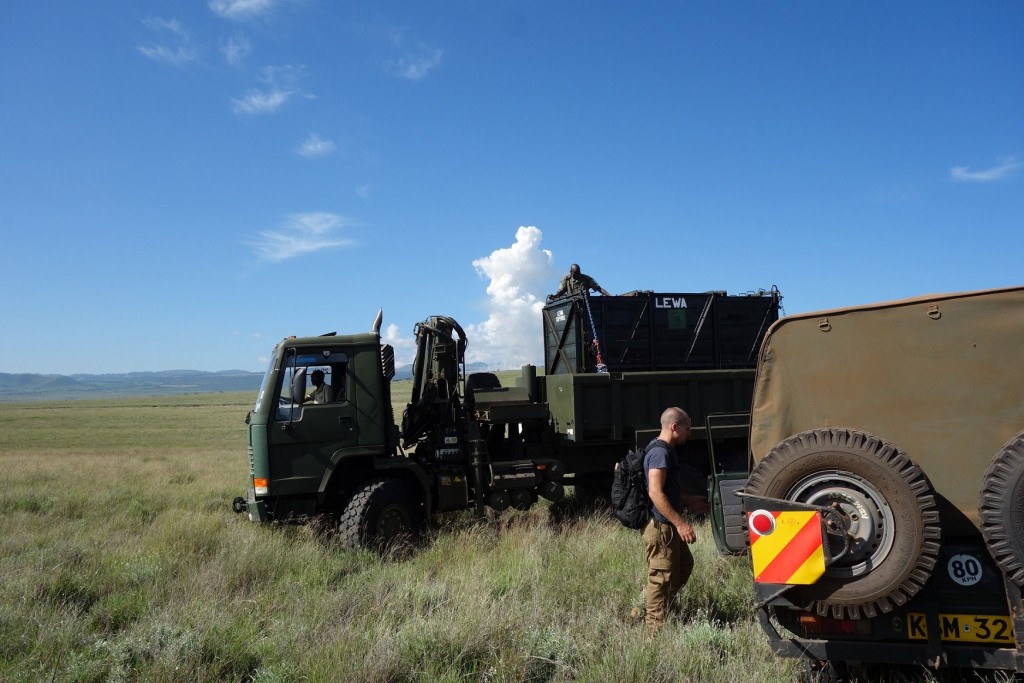
Mary, the first of the trans-located, black rhinos is on her way.
——————————————————————————————————————-
Trans locating animals, particularly large ones, is not without its risks. We were saddened to learn that three of the first 17 black rhinos transported died. One died on Lewa, never waking up from the anesthetic. Two more died at Sera, apparently from dehydration. It is believed they didn’t find water in their new environment fast enough. The Sera translocation was halted for a few days to ensure that all the surviving rhino were getting on well. We are happy to report that they are.
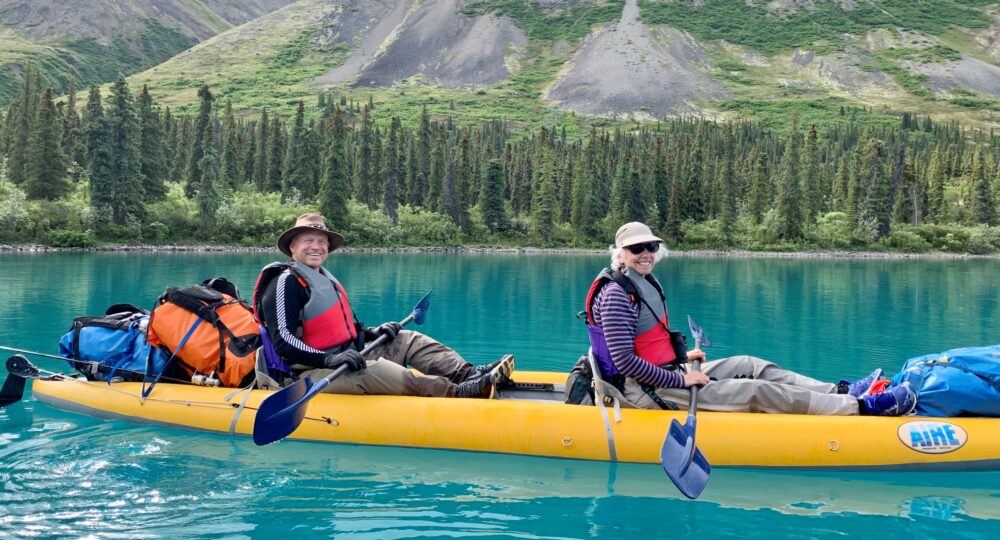
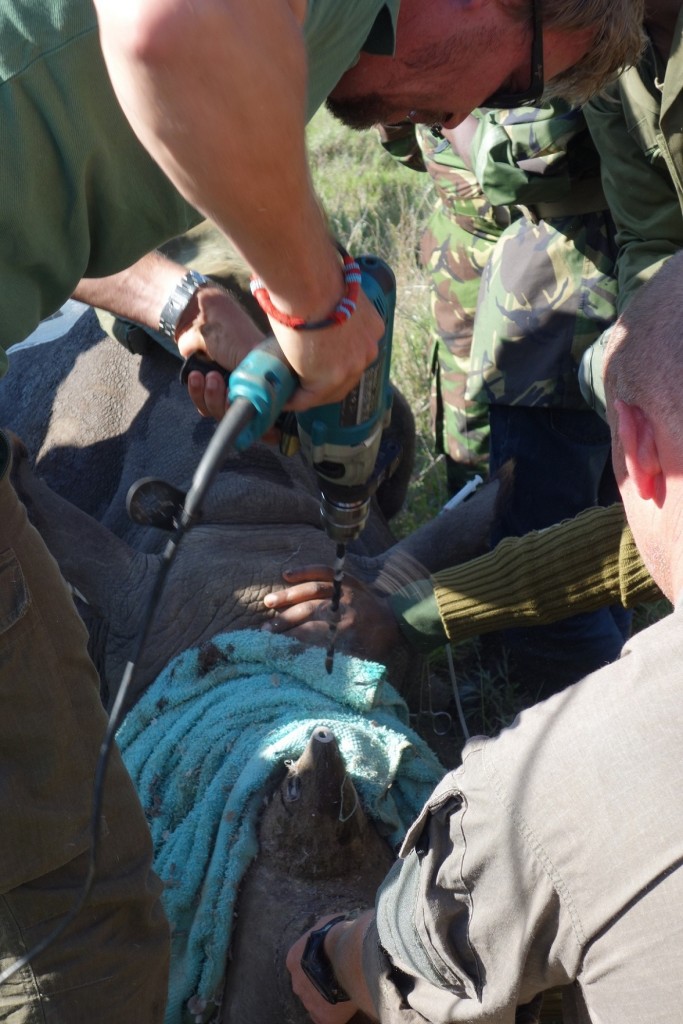
Enjoyed the rhino relocation. It is a shame that some have been lost in past. Curious about your interest in Flowers for Algernon. Read it a long time ago, a sad story and provocative in thought. For many years , living “fat ,dumb,and happy” seems to keep me happy and fulfilled in many area of my life. I am not so sure being smarter does not simply complicate ones life. I guess it’s not smarter, it’s having knowledge and what we do with it. We live in a very complicated world. Your experiences these last 2 years have given you a broader perspective as to everything I guess. There will be some interesting discussions at the sib r
eunion.
Hi John, thank you for the great documentary. Glad you and Anne are well, happy, and having great adventures like this one.
Thanks for the lesson on how to move a Rhino. You never know when that knowledge might come in handy.